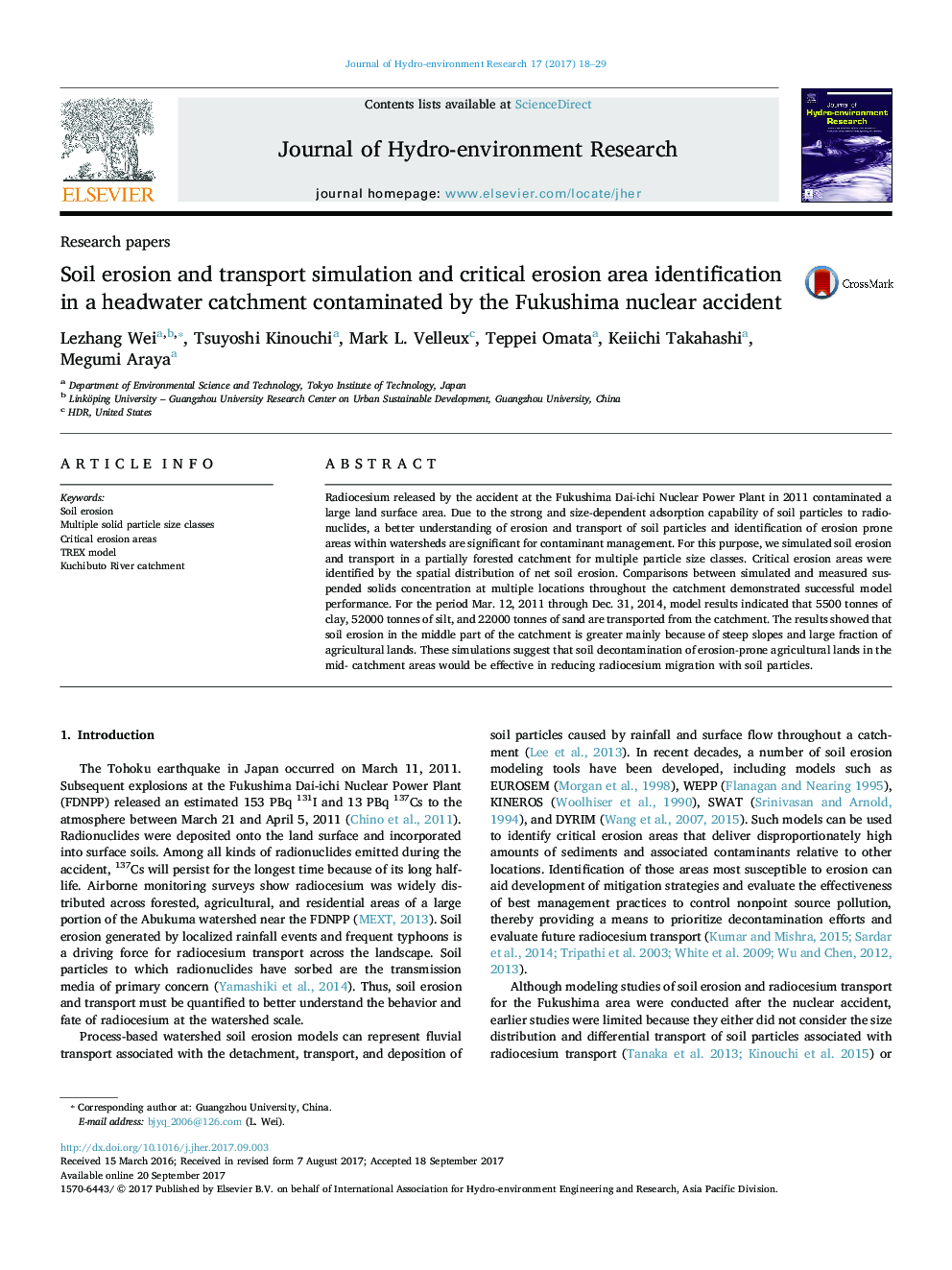| Article ID | Journal | Published Year | Pages | File Type |
|---|---|---|---|---|
| 5759872 | Journal of Hydro-environment Research | 2017 | 12 Pages |
Abstract
Radiocesium released by the accident at the Fukushima Dai-ichi Nuclear Power Plant in 2011 contaminated a large land surface area. Due to the strong and size-dependent adsorption capability of soil particles to radionuclides, a better understanding of erosion and transport of soil particles and identification of erosion prone areas within watersheds are significant for contaminant management. For this purpose, we simulated soil erosion and transport in a partially forested catchment for multiple particle size classes. Critical erosion areas were identified by the spatial distribution of net soil erosion. Comparisons between simulated and measured suspended solids concentration at multiple locations throughout the catchment demonstrated successful model performance. For the period Mar. 12, 2011 through Dec. 31, 2014, model results indicated that 5500 tonnes of clay, 52000 tonnes of silt, and 22000 tonnes of sand are transported from the catchment. The results showed that soil erosion in the middle part of the catchment is greater mainly because of steep slopes and large fraction of agricultural lands. These simulations suggest that soil decontamination of erosion-prone agricultural lands in the mid- catchment areas would be effective in reducing radiocesium migration with soil particles.
Keywords
Related Topics
Life Sciences
Agricultural and Biological Sciences
Agricultural and Biological Sciences (General)
Authors
Lezhang Wei, Tsuyoshi Kinouchi, Mark L. Velleux, Teppei Omata, Keiichi Takahashi, Megumi Araya,
